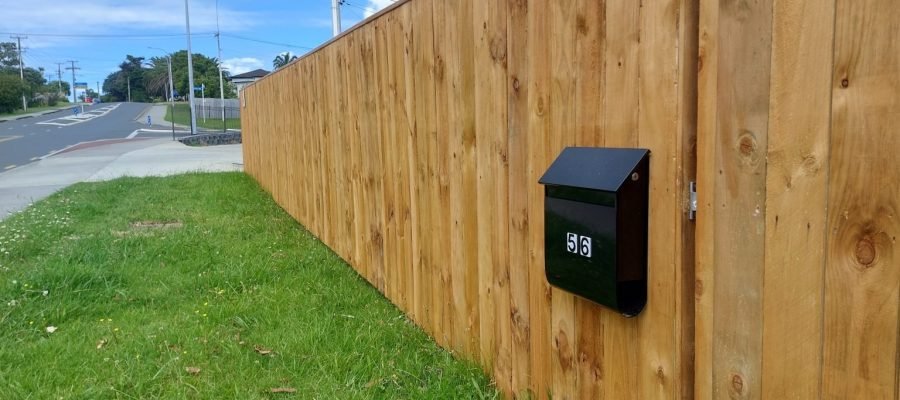How to Build a Fence: A…
Learn how to build a fence with this DIY guide for Auckland homeowners. Explore tools,…
Building a sturdy, long-lasting fence starts with getting the foundation right—specifically, the depth of your fence posts. For Auckland homeowners, DIYers, landlords, and lifestyle block owners, understanding how deep fence posts need to be is key to ensuring your fence stands strong against the city’s windy coastal weather and diverse soil conditions. Whether you’re putting up a boundary fence or enhancing your backyard’s privacy, this guide will walk you through NZ fencing standards, practical steps, and pro tips from My Homes Fencing Expert, Auckland’s trusted fencing pros.
The depth of your fence posts directly impacts the stability, durability, and safety of your fence. In Auckland, where coastal winds and clay-heavy soils are common, getting the depth right is non-negotiable. Here’s why:
A poorly set fence can lead to costly repairs or even disputes with neighbours over boundary lines. By following proper guidelines, you’ll avoid these headaches and enjoy a fence that lasts decades.

In New Zealand, a general rule of thumb for fence post depth is to bury one-third of the total post height underground. This ensures a solid foundation while balancing cost and effort. For example:
The material of your posts also affects depth:
Check out the post hole depth chart below for quick reference:
Fence Height | Recommended Post Depth | Total Post Length (Timber) |
1.2m | 400mm | 1.8m |
1.8m | 600mm | 2.4m |
2.4m | 800mm | 3.2m |
Note: Always check with Auckland Council for specific timber fencing regulations in NZ if your fence exceeds 2.5m in height, as consents may be required.
Several factors unique to your Auckland property will determine the exact depth needed for your fence posts. Here’s what to consider:
By assessing these factors, you can tailor your post depth to your site’s unique conditions, ensuring a fence that’s both functional and compliant.
Before you start digging, gather these essentials for DIY fence installation in Auckland:
Pro tip: Renting an auger from a local hire centre can save hours of manual digging, especially in Auckland’s tough clay soils.
Follow these steps to ensure your fence posts are set securely for a long-lasting fence:
For a visual guide, check out My Homes Fencing Expert’s website for tutorials or contact their team for professional advice at 022 315 8987.
The team at My Homes Fencing Expert has years of experience building fences across Auckland’s diverse landscapes. Here are their top tips for setting fence posts in Auckland:
For complex projects or tricky terrains, save time and stress by hiring My Homes Fencing Expert. From boundary lines to backyard makeovers, they’ve got you covered.
Can I just use dirt instead of concrete?
While you can backfill with compacted dirt in some cases, it’s not recommended for Auckland’s wet and windy conditions. Gravel vs concrete post setting is a common debate, but concrete provides superior stability, especially for taller fences or high wind zones. Dirt alone may lead to leaning posts over time.
How far apart should fence posts be?
In NZ, posts are typically spaced 1.8–2.4m apart, depending on the fence type and material. For lightweight fences (e.g., wire), you can space posts further apart; for heavy timber panels, closer spacing (1.8m) is better.
Do I need council consent in Auckland for a fence?
Fences under 2.5m in height generally don’t require consent under NZ’s Building Act 2004, but Auckland Council may have specific rules for boundary fences or heritage zones. Always check with the council or consult My Homes Fencing Expert for guidance.
Getting your fence post depth right is the foundation of a strong, weatherproof fence that stands the test of time in Auckland’s unique climate and soils. By following NZ fencing standards, assessing your site’s conditions, and using the right tools and techniques, you can build a fence that’s both functional and attractive. For DIYers, this guide provides a solid starting point, but if you want a flawless finish or need help navigating tricky terrain, trust the professionals at My Homes Fencing Expert.
📞 Call 022 315 8987/
From solid footing to straight lines — we’re Auckland’s fencing pros!
Learn how to build a fence with this DIY guide for Auckland homeowners. Explore tools,…
Learn how to layout a curved fence with this DIY guide for Auckland homeowners. Discover…
How Deep Do How Deep Do Fence Posts Need to Be? Introduction Building a sturdy,…